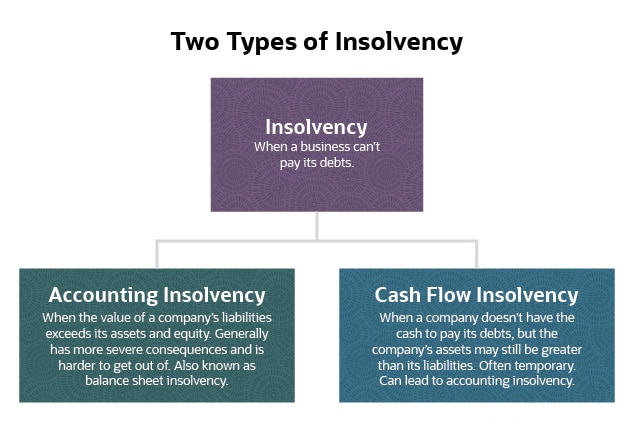Some Ideas on Insolvency Practitioner You Need To Know
Some Ideas on Insolvency Practitioner You Need To Know
Blog Article
The 8-Minute Rule for Insolvency Practitioner
Table of ContentsMore About Insolvency PractitionerThe Only Guide for Insolvency PractitionerThe smart Trick of Insolvency Practitioner That Nobody is DiscussingThe 6-Second Trick For Insolvency PractitionerNot known Details About Insolvency Practitioner Little Known Facts About Insolvency Practitioner.The Ultimate Guide To Insolvency Practitioner
Insurance policy is kept an eye on and controlled by state insurance departments, and among their main purposes is securing insurance holders from the danger of a company in economic distress. When a business gets in a duration of financial trouble and is not able to meet its commitments, the insurance commissioner in the firm's home state starts a processdictated by the laws of the statewhereby efforts are made to aid the firm regain its financial ground.If it is determined that the firm can not be fixed up, the firm is proclaimed insolvent, and the commissioner will ask the state court to purchase the liquidation of the business. [Back] The insurance coverage commissioner, either designated by the governor or elected, heads the state insurance department and screens and regulates insurance task within the state.
[Back] By getting control of a firm, the commissioner (or the insurance department) is, by regulation, the rehabilitator or liquidator of the company. In this capacity, the commissioner or department takes control of the business's operations. Instead of do so directly, the commissioner may retain an unique deputy receiver to monitor the business's activities - Insolvency Practitioner.
The 9-Minute Rule for Insolvency Practitioner
The receiver looks after an accountancy of the business's possessions and responsibilities and provides the estate of the firm. In doing so, the receiver seeks to make the most of the business's properties, move them to cash, and afterwards distribute that money to creditors having valid insurance claims against the insurance provider in conformity with payment concerns specified by state regulation (in all states, insurance holders are concern claimants whose claims are paid before those of basic financial institutions).
All insurer (with restricted exceptions) accredited to market life or health and wellness insurance or annuities in a state should be members of that state's warranty organization. The guaranty association complies with the commissioner and the receiver in pre-liquidation planning. Once the liquidation is purchased, the warranty association gives insurance coverage to the firm's insurance policy holders who are state locals (approximately the levels specified by state lawssee listed below; any advantage quantities above the guaranty asociation benefit levels end up being insurance claims against the business's continuing to be assets).
A Biased View of Insolvency Practitioner
The above coverage degrees use separately for each bankrupt insurance firm. [Back] When an insurer falls short and there is a shortage of funds needed to fulfill the commitments to insurance policy holders, state warranty organizations are turned on. Warranty associations have two major resources of funding when providing coverage to policyholders. Guaranty associations have subrogation legal rights to a proportional share of the assets staying in the failed insurance firm.
Second, insurance companies doing company in that state are examined a share of the amount required to satisfy the section of the warranty associations' covered claims not otherwise funded with estate properties. The amount insurers are analyzed is based on the quantity of costs that they accumulate because state. [Back] The National Company of Life and Health And Wellness Insurance Policy Guaranty Organizations (NOLHGA) is composed of the life and medical insurance guaranty associations of all 50 states and the District of Columbia.
NOLHGA establishes a task pressure of depictive warranty organizations to collaborate with the insurance policy commissioner to develop a plan to protect insurance policy holders. For more details on NOLHGA's role at the same time, see "What Is NOLHGA?" and "The Safeguard at the office." [Back]
The Facts About Insolvency Practitioner Revealed

Predictive protection by assisting you choose the ideal consumers and the appropriate markets to stay clear of uncollectable loan in the initial location, thanks to severe economic evaluation. Comprehensive market intelligence, providing you with 360-degree visibility on company industries and putting in jeopardy problems. It would be a simplification to think a profession credit insurance policy begins and finishes with premiums and pay-outs.

How Insolvency Practitioner can Save You Time, Stress, and Money.
It can cause job losses, property sales, and even personal bankruptcy. It is essential to understand how company bankruptcy jobs and exactly how it can impact your company. Why does a firm enter into bankruptcy? There are a number of factors why a business may enter into insolvency. One of the most usual reason is that the business is incapable to pay its debts as they fall due.
Other reasons for insolvency include fraud, mismanagement, Visit Website and unanticipated costs. Insolvency can likewise lead to work losses and the closure of services.
Not known Details About Insolvency Practitioner
The company may be required to sell possessions, lay off personnel or even close down. Financial institutions might be left out of pocket and the firm's shareholders might see their investment vanish.
This can happen for a variety of reasons, consisting of bad monetary monitoring, unexpected costs, or a modification out there. If a business is financially troubled, it may be required to fold or sell assets to pay creditors. This can have a major effect on the company, employees, and shareholders.
It can bring about work losses, asset sales, and even insolvency. It is very important to understand just how corporate bankruptcy jobs and how it can affect your company. Why does a business become part of insolvency? There are a variety of reasons that a firm might become part of bankruptcy. The most common reason is that the business is not able to pay its financial debts as they drop due.
Rumored Buzz on Insolvency Practitioner
Other factors for bankruptcy consist of fraudulence, mismanagement, and unanticipated expenses. When a company ends up being insolvent, its possessions are used to settle its financial debts - Insolvency Practitioner. This can have a my link major effect on the service, as it might no much longer have the ability to proceed running. Insolvency can also lead to job losses and the closure of businesses.
The firm may be forced to offer possessions, lay off staff or even shut down. Creditors may be left out of pocket and the firm's shareholders might see their financial investment go away.
Report this page